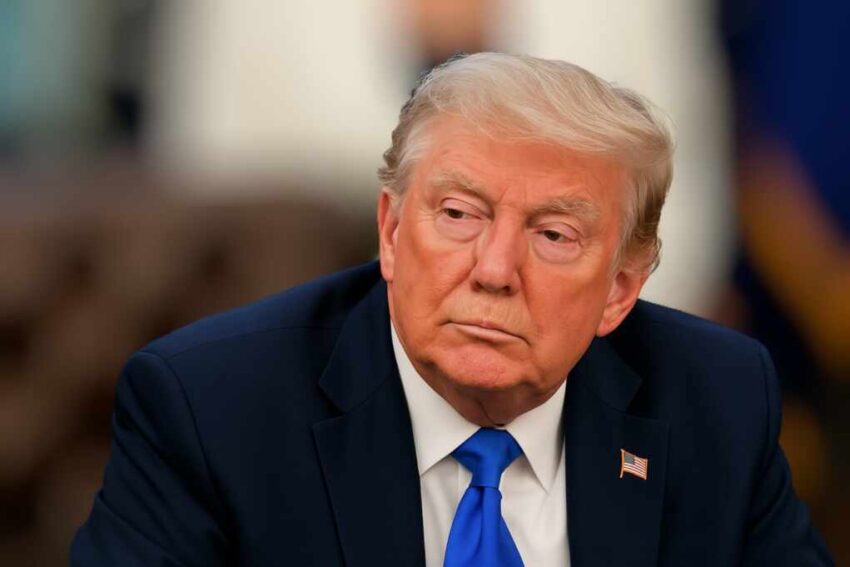A political strategist warned that presidential oversight of cultural institutions risks echoing authoritarian patterns, potentially undermining historical integrity.
At a Glance
- A directive from the White House calls for review of Smithsonian Institution exhibits.
- David Axelrod publicly criticized the move as having a “Stalinist” tone.
- The comparison draws on historical actions by Soviet leader Joseph Stalin.
- The critique was broadcast by major news outlets including CNN.
- The controversy raises debate over executive influence on museum content.
Presidential Oversight and the Smithsonian
The White House implemented a directive urging review of Smithsonian Institution exhibits, prompting concern among observers about politicizing cultural content. Former Obama aide David Axelrod, now a CNN political commentator, responded sharply, characterizing the move as “Stalinist” for its implied rewriting of history to suit current narratives.
Watch now: David Axelrod: Trump Strong-Arming Smithsonian ‘Stalinist’ · RealClearPolitics
The Smithsonian Institution, which operates as a group of museums and research centers funded in part by the federal government, is generally perceived as a politically neutral guardian of U.S. history. Critics argue that executive-initiated reviews, especially those tied to political agendas, risk influencing the selection, presentation, and framing of historical material. Such changes, they warn, could subtly alter public understanding over time. Similar debates arose in 1994 over presidential input on the Enola Gay exhibit.
Axelrod’s Critique and Historical Context
Axelrod drew his comparison to Soviet-era censorship, notably Joseph Stalin’s systematic reconfiguration of historical records to align with political aims. Stalin’s regime was notorious for removing figures from photographs, revising history textbooks, and reinterpreting past events to strengthen state narratives. By invoking that period, Axelrod underscored the perceived dangers of centralized control over historical interpretation.
He noted that while U.S. institutions operate within a democratic framework and with multiple checks and balances, the precedent of altering historical displays based on current political leadership sets a worrying tone. Coverage of his remarks spread rapidly, appearing on CNN and political media platforms such as Mediaite. Analysts observed that the use of authoritarian comparisons, even if rhetorical, tends to elevate public scrutiny of such directives.
Institutional Independence Under Scrutiny
The debate over the Smithsonian directive raises broader questions about the relationship between government oversight and cultural independence. Supporters of the review argue that elected leaders have a responsibility to ensure federally funded institutions reflect shared national values. They contend that oversight is part of maintaining accountability for publicly funded programming.
Opponents counter that museums and cultural organizations must be allowed to present scholarship and history without political interference, even when such narratives challenge prevailing political sentiment. The Smithsonian’s track record includes moments of public controversy—such as disputes over exhibits on the Enola Gay, climate science presentations, and depictions of racial history—yet these debates have historically been resolved within curatorial and scholarly channels rather than by direct executive mandate.
Scholars and museum professionals emphasize that historical interpretation is an evolving process, shaped by ongoing research and societal reflection. Direct intervention from political offices risks imposing a fixed narrative, potentially reducing the depth and diversity of perspectives offered to the public. In this view, the value of institutions like the Smithsonian lies in their ability to operate outside the immediate pressures of partisan politics.
The current dispute has placed the Smithsonian at the center of a broader national conversation about cultural autonomy, historical accuracy, and the role of government in shaping collective memory. Whether this directive will result in significant changes to exhibits or merely serve as a symbolic gesture remains to be seen, but the concerns it has raised are unlikely to fade quickly.
Sources
Click this link for the original source of this article.
Author: Editor
This content is courtesy of, and owned and copyrighted by, https://deepstatetribunal.com and its author. This content is made available by use of the public RSS feed offered by the host site and is used for educational purposes only. If you are the author or represent the host site and would like this content removed now and in the future, please contact USSANews.com using the email address in the Contact page found in the website menu.








